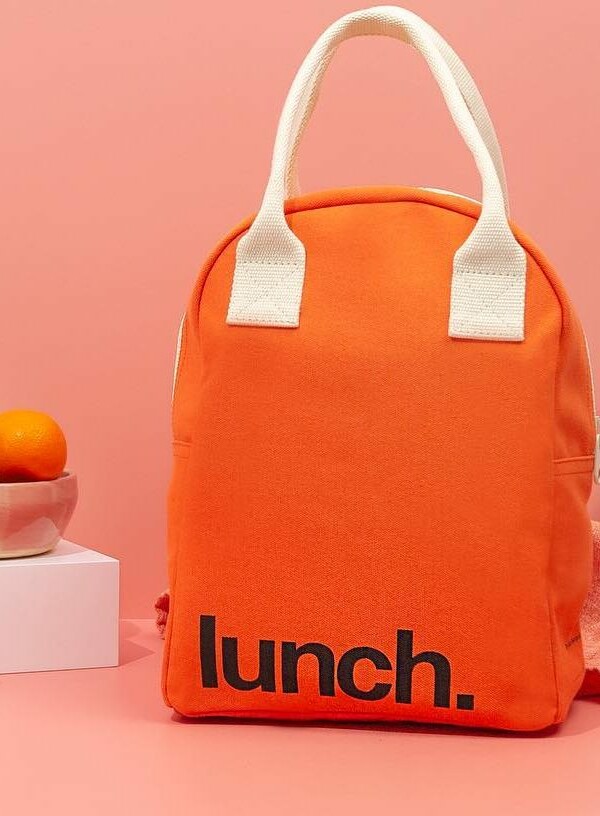The Best Organic Crib Mattresses at a Glance:
- Best Overall: Savvy Rest & Naturepedic
- Most Affordable (100% natural/organic): My Green Mattress
- Most Affordable (not 100% natural): Lullaby Earth
- Most Variety of Options: Naturepedic
- Best for Travel: Naturepedic Mini Crib Mattress
+ see more recommendations and discount codes below!
We know you want the best for you baby. In fact, it’s becoming a parent that leads a lot of people to start questioning what exactly is in the products they buy and begin the switch to a more low-tox lifestyle.
When preparing for your little one’s arrival, their sleeping environment is often one of the first things you might think about. Not only do babies spend around 16 hours per day sleeping, but sleep is also when the body does a lot of its growing, creating, and repairing processes. So fostering a safe and healthy sleep environment for your baby is important!
In this guide, we’re breaking down what to look for in a non-toxic and/or organic crib mattress and which brands we trust the most.
(By the way, click here for recommendations on organic bassinets and here for our guide to non-toxic cribs. And if you’re in the market for adult mattresses, check out this guide. And for your child’s first big kid bed, click here!)
Table of Contents
This article contains affiliate links, which means we may earn a commission if you decide to make a purchase. We only make recommendations that are genuine and meet our standards.
Featured Image Credit: Naturepedic
What Is the Safest Material for a Baby Mattress?
If possible, you want to stick with natural and organic materials as much as possible when shopping for crib mattresses. Not only do babies breathe more air than adults do (pound for pound) and put their hands in their mouths a lot more, but they’re also still developing, putting them even more vulnerable to environmental toxins. Small changes in their hormonal activity due to things like endocrine disrupting chemicals (ECDs) such as flame retardants, PFAS, and phthalates can potentially lead to negative health consequences. Some of these health concerns can show up while they’re still young, while others may not manifest until decades later.
Many crib mattresses are made out of polyurethane (PU) foam, which is a synthetic material derived from petroleum. If possible, we recommend completely skipping the PU foam. Not only is it an unsustainable material from an environmental standpoint, but it’s also not very healthy. PU foams can slowly and steadily “off-gas” toxins such as 2,4-toluene diisocyanate (a carcinogen), hydrogen cyanide (which can cause various problems), methylene chloride (also a carcinogen), and hydrochloric acid (an irritant). The EPA has actually put limits on the amount of these chemicals that furniture foams are allowed to release in order to comply with the Clean Air Act.
Speaking of “off-gassing,” it’s important to make note of the common misconception that mattresses and other PU products “finish” off-gassing. This isn’t necessarily true. In fact, as a product ages and starts to break down (after several years), it actually off-gasses more than it did initially.
The other important thing to keep in mind about PU foam is that it’s more flammable than other types of materials (since it’s made from fossil fuels!), and for this reason, it’s often got toxic flame retardants added to it. We’ll talk more about flame retardants in a minute.
Lastly, PU foam is also not as breathable as more natural materials, which means it can lead to a hotter and less comfortable sleeping environment for your baby.
Here are some of the better materials to look for in your baby’s non-toxic crib mattress:
- cotton: unbleached and organic cotton is a very commonly used component used for padding as well as the outer mattress cover
- wool: often used as padding and to meet anti-flammability requirements
- latex: often used in place of PU foam, natural latex (which comes from rubber trees) adds support and can mold to your baby’s body while still remaining firm
- coco fiber: made from coconut husks, this is also used for support and pressure-relief, while also encouraging airflow
- hemp: similar to coco fiber, a hemp layer can also provide support and airflow, while at the same time providing some resistance against mold and mildew
- steel: if the crib mattress has traditional coils, they’re probably made out of steel (sometimes recycled, which is a more eco-friendly option!)
- sugar cane/PLA: many non-toxic crib mattresses employ a waterproof layer that’s made out of a type of “plant-based plastic,” which we’ll talk about more in a minute
But What About CertiPUR Certified Foam—Is That Safe for Babies?
You’ll notice that a lot of foam mattresses (for both babies and adults) come with the CertiPUR certification, which looks like this:

This label means that the foam is free from:
- Certain flame retardants like PBDEs, TDCPP or TCEP (”Tris”) (note that it doesn’t necessarily mean it’s free from all chemical flame retardants)
- Certain heavy metals like mercury and lead (again, not all heavy metals)
- Formaldehyde
- Certain phthalates
- Chlorofluorocarbons (CFCs) and other ozone depleters
- And it also means the foam is “low VOC” at less than 0.5 parts per million
It’s worth noting that this label only certifies the foam itself; it says nothing about the other materials and processes used to create the finished product. (This is one reason why we like to look for multiple kinds of third-party certifications, which certify different parts of the product.)
Many mattress companies on the market use their CertiPUR certifcation to market their mattress as “green” or “eco-friendly” or “safe”… But this is really just greenwashing. A CertiPUR label doesn’t necessarily indicate that a product is non-toxic. The CertiPUR label is certainly better than nothing, but we see it more as a bare minimum.
Skip the Flame Retardants
One might think (in part due to the marketing efforts of chemical companies over the past several decades!) that flame retardants are a necessity for a baby’s safety. However, the truth is that chemical flame retardants are not only incredibly toxic (associated with everything from cancer to developmental problems to decreased IQ and more), but they don’t even work in slowing the spread of flames.
For this reason, regulations on flame retardants in the United States have been changing over the past several years. States have slowly started to ban specific types of flame retardants and many conventional furniture companies started taking flame retardants out of their products voluntarily.
Then in 2020, a California law went into effect that bans all types of chemical flame retardants in kids’ products, mattresses, and upholstered furniture at levels above 1,000 parts per million. This is great news because it means that the chances you and your baby will come into contact with toxic flame retardants (or at least high levels of them) are significantly reduced compared to just a decade ago.
Although there are still certain fire standards that products must legally meet, if you buy an organic mattress made from natural materials, you don’t really have to worry about this. As mentioned earlier, synthetic PU foam tends to be very flammable, so choosing a mattress that does not contain PU foam automatically decreases flammability. Then when a naturally flame-resistant material such as wool is added, you’ve met the anti-flammability requirements required by law (at least in the U.S.)!
Flame retardants do vary quite widely from location to location, so you might want to become familiar with flame retardant regulations in your country and/or the country of origin of the product you’re buying before making your purchase. (IKEA, for example, has a ban on flame retardants except in locations where their products are sold and flame retardants are still required by law.)
Other Factors to Consider When Choosing the Best Crib Mattress for Your Baby
In addition to materials, here are some more things to consider when picking out a crib mattress for your baby:
Water-Resistance
Water resistance is obviously an important part of baby and toddler mattresses since you’re going to be dealing with accidents, spit up, spills, etc.
You definitely want to prevent mold and mildew growth in your mattress, but you do not want your child’s mattress to include any toxic PFAS (a.k.a. “forever chemicals”), which are often used to make products resistant to water and stains.
For this reason, some non-toxic brands have found alternative methods of waterproofing their products. Naturepedic, for example, uses a polylactide (PLA) layer in some of its products. PLA is a synthetic fiber, but it’s made from sugarcane (which is non-GMO in Naturepedic’s case), so it’s a better choice than petroleum-based plastics or PFAS.
Other brands offer a water-resistant cover made from organic cotton but is just very tightly woven, which prevents much of the liquid from seeping through.
Some of the non-toxic and organic crib mattresses recommended below have a water-resistant layer and others don’t. Some offer a separate waterproof cover to go over the mattress. You just have to choose what is best for you and your little one!
Flippability
Several of the brands below offer “2-stage” or “flippable” mattresses, which essentially increases the amount of time you’re able to use the mattress. One side is softer and meant for newer babies, and the other side is firmer and meant for toddlers. These options tend to be a bit more expensive, but they will also last you about twice as long.
Breathability
Breathability is also important for SIDS prevention. Babies need to be able to breathe freely even if they roll over onto their stomach. Not only that, but breathable mattresses with adequate air flow can also provide better temperature regulation and overall more high-quality sleep for baby.
Natural and organic crib mattresses are automatically more breathable compared to foam since the materials naturally have better airflow.
Size & Shape
Obviously you’ll want to choose a mattress that fits with your crib! A lot of the organic crib mattresses recommended below come in the “standard crib size,” which is 28” x 52” x 6”. Naturepedic, however, offers a few different shapes and sizes, including a “mini crib” option and an oval crib mattress.
To prevent your baby from getting stuck between the mattress and the crib rails, it’s important to make sure your mattress fits correctly with the crib (more on that at the bottom of the article).
Firmness
A crib mattress should be firm. Not only will this help provide a sturdy foundation for the baby to move around on as they become mobile, but it will also help prevent sudden infant death syndrome (SIDS) since softer sleeping surfaces can increase the risk of suffocation.
Third Party Certifications
Third-party certifications are great because they provide a certain amount of accountability for brands. Although each certification system has its pros and cons (they’re not perfect!), they do provide consumers with some assurance that the brand has met a set of standards when it comes to safety and sustainability.
Some of the certifications to look for in non-toxic and organic crib mattresses include:
- MADE SAFE: One of our favorite certifications because of how strict it is on the materials and ingredients allowed! This certifies an entire product.
- Global Organic Textile Standard, or GOTS: This certifies cotton and/or wool, indicating that the material has been grown and sourced without pesticides or other toxic chemicals.
- Global Organic Latex Standard, or GOLS: This is similar to GOLS, except for latex. It means the latex is made from organic rubber trees (as opposed to synthetic latex, which is basically just plastic).
- GREENGUARD and/or GREENGUARD Gold: This limits the amount of volatile organic compounds (VOCs) that a mattress is allowed to emit. GREENGUARD Gold has stricter standards than the regular GREENGUARD.
- OEKO-TEX: This certification means that a finished product is free from detectable levels of a variety of different toxic chemicals.
- Other certifications you may see on cribs and crib mattresses include things like Forest Stewardship Council (FSC), Rainforest Alliance, Carbon Neutral, and 1% For the Planet. These labels have more to do with environmental sustainability.
What About the Crib?!
Of course, you need a crib to go with your mattress as well. You’ll want to look for a crib made from solid wood and a non-toxic finish. We actually have a separate guide to help you pick out a crib, which you can check out here.
Home
The 9 Best Non-Toxic Cribs for 2024
Considering that babies sleep so much, creating a healthy sleep environment is an essential for most parents. Here’s where to find the best non-toxic cribs (and how to choose the best option for you).
These Are the Best Non-Toxic & Organic Crib Mattress Brands That Are Safe for Your Baby
Now let’s get on to our recommendations! Here are our favorite brands for non-toxic and organic crib mattresses that can help foster a safe slumber for your little one:
Savvy Rest

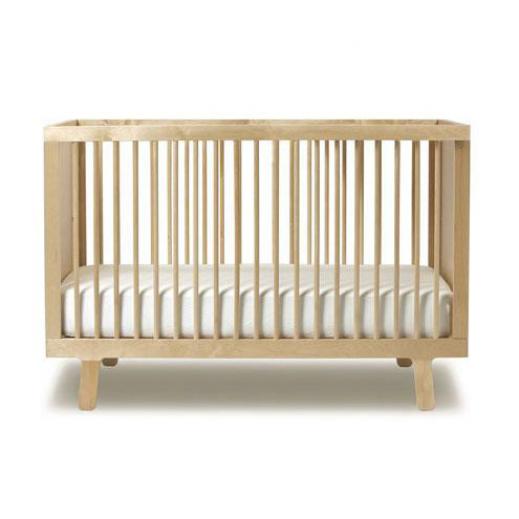
Price: $399-$599 (before discount)
Certifications: GOTS, GOLS
Savvy Rest offers two organic crib mattresses: The Savvy Baby and The Savvy Baby Talalay. The construction of these two mattresses are basically the same, but The Savvy Baby uses Dunlop latex, whereas The Savvy Baby Talalay uses Talalay latex!
Even though these two types of latex are both made from natural rubber, they differ in their manufacturing processes. Because of the way they’re made, Talalay latex ends up being softer and less-dense. (Savvy Rest is actually the only mattress manufacturer to offer completely GOTS-certified organic mattresses with Talalay latex!)
Other materials used in Savvy Rest’s organic crib mattresses include GOTS certified organic cotton and wool. Savvy Rest also conveniently carries non-toxic cribs, so you can buyy both necessities in place if you need to. Their Oeuf Crib is available in birch finish, white, walnut, or natural (unfinished). Plus, you can get a conversion kit to go with it to convert the crib into a toddler bed. They have a wool mattress pad, too.
Use the code THEFILTERY20 for 20% off.
Naturepedic

Price: $249-$499
Certifications: GOTS, GOLS, MADE SAFE, GREENGUARD Gold, FSC, Rainforest Alliance
Naturepedic offers several different types of organic crib mattresses, including three different standard sized ones (Classic, Breathable, and Ultra-Breathable), a Mini Crib one, and an Oval one. Depending on which size/shape you choose, you can also select whether you’d like lightweight (for easier sheet changing & travel) or innerspring (for more strength and durability). You can also get a “2-Stage” option, which has a softer side and a firmer side that allows you to flip the mattress as your child grows (and make it last longer!).
The majority of the crib mattress is made out of GOTS certified organic cotton, but then there is a waterproof layer that’s made out of non-GMO sugarcane. Naturepedic’s mattresses are super healthy for your baby, with a handful of third-party certifications, including MADE SAFE. Plus, they’re made in the USA and come with a 100-night trial, free shipping & returns, and a limited lifetime warranty.
They offer all the necessary accessories, too, including mattress protector pads, covers, and an organic changing pad.
Use code thefiltery15 for 15% off.
My Green Mattress
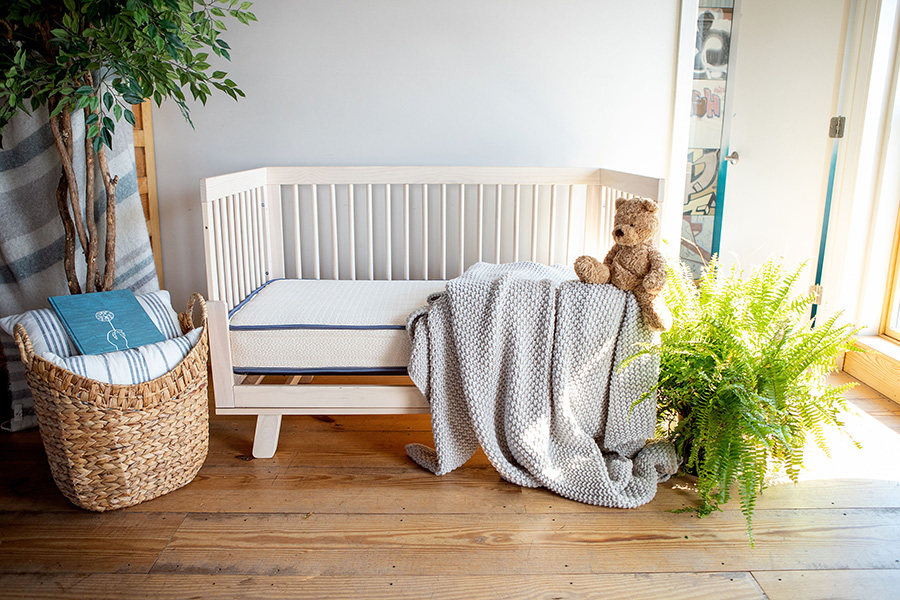
Price: $299 (before discount)
Certifications: GOTS, GOLS, OEKO-TEX, GREENGUARD Gold
My Green Mattress’ Emily Organic Crib Mattress is made in the USA out of GOLS certified organic coconut coir, GOTS organic cotton, GOTS organic wool, and OEKO-TEX certified Dunlop latex (natural rubber). It’s MADE SAFE certified as well.
To go with your baby’s organic crib mattress, you can also add on an organic mattress protector to prevent mold and mildew and/or an organic cotton sheet set.
Each mattress also comes with a 10-year warranty and a 365-night sleep trial. My Green Mattress also offers mattress removal (for a fee) in most states.
Use code THEFILTERY20 to get the most current best price.
Obasan
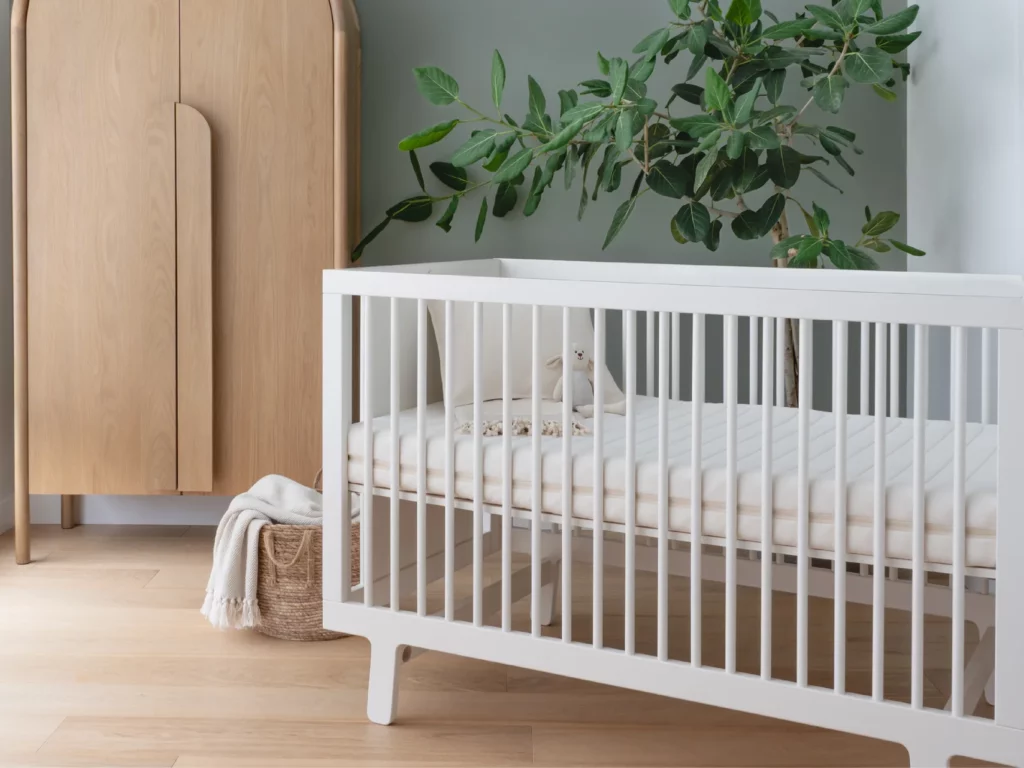
Price: $349
Certifications: GOTS, GOLS
Obasan’s non-toxic crib mattresses are handmade in Ottawa, Canada, where they’re based. It’s made out of two 2-inch layers—one of extra-firm organic rubber and the other of a natural rubberized coconut fiber. Then it’s covered with organic wool (as a fire barrier) and organic cotton. Of course, it’s free from all of the concerning toxics, like chemical flame retardants, glues, dyes, and other synthetics.
Obasan’s organic crib mattress fits all standard North American crib frames. They also offer a 10-year limited warranty and free shipping on orders over $400.
Lullaby Earth
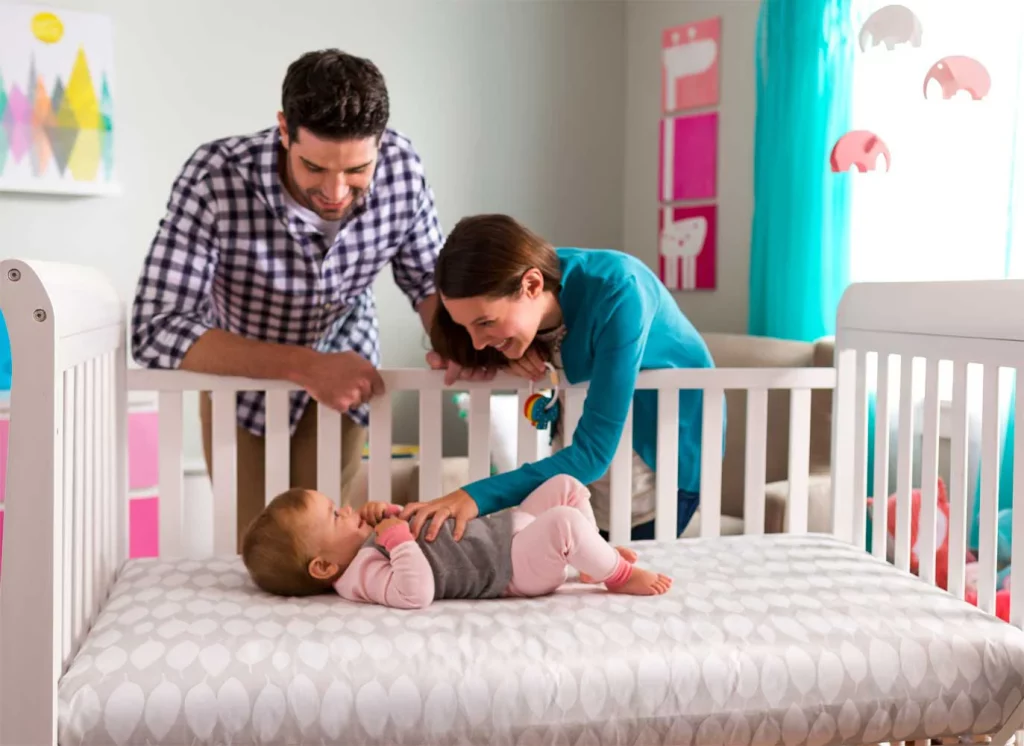
Price: $180-$280
Certifications: MADE SAFE, GREENGUARD Gold
Lullaby Earth is the best middle-ground when considering non-toxic materials and affordability. Although it’s not made from completely natural/organic materials, it’s the most affordable crib mattress on this list. Plus, it’s actually made by Naturepedic (its parent company), which is a brand we trust.
Their most affordable non-toxic crib mattress, which comes in at $180, is waterproof and made out of food-grade polyethylene and polyester. It’s free from things like flame retardants, formaldehyde, PFAS, pesticides, glues/adhesives, polyurethane foam, and vinyl/PVC. This non-toxic crib mattress is also made in the USA and come with a limited lifetime warranty, too.
Use the code thefiltery15 for 15% off you order.
Natural Home by The Futon Shop


Price: $497-$759
Certifications: GOTS, OEKO-TEX
The Futon Shop offers a few different “chemical-free” crib mattresses, which are made out of safe materials like wool, latex, cotton, and coconut coir. On each product page, you can see a cross-section image of what the mattress looks like so you can choose which one is the best fit for your babe. They’re all hand-stitched in San Fransisco, too.
To outfit your crib mattress, The Futon Shop also offers organic cotton waterproof mattress protectors and crib sheets.
More Safe Sleep Practices
In addition to materials, there are some other things to keep in mind when setting up a safe sleep environment for your baby. You should consult your pediatrician and/or the U.S. Consumer Product Safety Commission (CPSC) for more info, but here are some of the best practices:
- Make sure your crib mattress fits properly inside the crib and that there are no gaps larger than two fingers between the sides of the crib and the mattress.
- Don’t keep any loose sheets, blankets, or stuffed animals in the crib with the baby.
- Place the crib in an area where the child will not be able to reach any window blinds, curtain rods, baby monitor cords, etc.
- Keep an eye on recalls.
More FAQs About Crib Mattresses
Are Babyletto mattresses non-toxic?
Babyletto carries a selection of both cribs and crib mattresses. Their cribs are actually a good option because they’re made from solid wood (with the exception of the ones that have drawers, with also have MDF) along with low-VOC and lead-free paint.
Babyletto’s crib mattresses, on the other hand, are so-so. Both their “Pure Core” and their “Coco Core” varieties employ synthetics like polyester. Even though the “Coco Core” mattresses include more natural materials, none of them are organic. All of their mattresses are GREENGUARD Gold certified, so that’s definitely better than nothing. But they also run anywhere from $129 to $289; if you’re going to spend that much on a crib mattress, we recommend going with a more fully organic option (like from the brands listed above).
Are IKEA baby mattresses non-toxic?
IKEA’s selection of crib mattresses are made from a variety of synthetic and natural materials like polyester, cotton, polyurethane foam, steel, polypropylene, and more. None of these materials are organic.
IKEA has its pros and cons. Although their mattresses cannot really be considered non-toxic (since they’re made using things like PU foam), IKEA’s overall materials standards are relatively robust compared to other big retailers. For example, they banned PFAS from their products back in 2016. You can read more about IKEA’s policies with regard to toxic chemicals here.
The main selling point for IKEA’s mattresses is that some of them are more affordable (starting at around $60). If you’re on a tight budget, getting an IKEA crib mattress is definitely not the worst option. But if you’re able and willing to pay more, we suggest going with one of the organic recommendations listed above!
(P.S. It’s also worth noting that two of IKEA’s mattresses were recalled back in 2015 because of risk of entrapment.)
Does a crib mattress need to be organic?
If you’re on a tight budget and are working with a hand-me-down crib mattress or need to spend under $100, please don’t feel guilty about not being able to get an organic mattress for your little one. We all have to do the best we can, and sometimes that means doing things imperfectly!
But if you do have the budget, we do recommend buying a crib mattress that is made from non-toxic and organic materials. Considering how much your baby sleeps and how vulnerable their developing bodies (and minds) are to environmental toxins, it’s important for parents to decrease their exposure when possible.
Want more non-toxic product picks, quick tips, and more delivered to your inbox each week? Sign up for Filtered Fridays!



